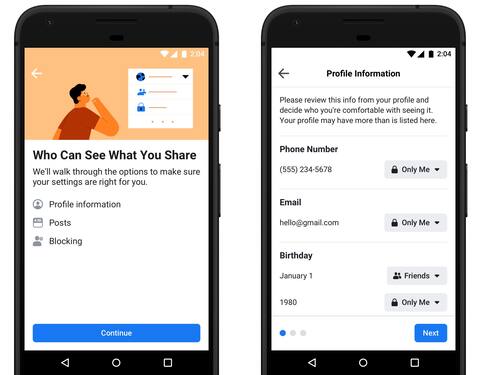
Autumn is the big annual unboxing for mobile device manufacturers. Whether you’re buying a new smartphone or not, the basics outlined here apply to search engines and social media as well. In short, the default settings (or factory if you prefer) are a real open door to your privacy for these giants – and with everything that follows; Advertising, Tracking, Profiling, Geolocation etc.
Take, for example, the voluntary data sharing you request when you first use a product to identify bugs, improve services, develop better algorithms, etc. Recent cases or discoveries prove that information gathering is actually very real.
So as soon as you get your hands on a new device or use a new service, you’ll need to spend time poring over menus and commands to find out what to uncheck.
Let’s start with the devices and services of Google, the advertising giant as we know it. All its services (search engine, YouTube, Google Maps and others) are linked to Google accounts (required to use its online services) where you can see your own activities myactivity.google.com.
If you’re one of the billions of people using Google services, go to the site above to opt out of these three categories: “Web & App Activity”, “Location History” and “YouTube History”.
For everything, you can choose to disable everything or, as many experts suggest, automatically delete activities older than three months. During this time, Google services may be used to make useful recommendations to you based on your recent usage or searches.
A word about Android phones, newer versions of which allow approximate rather than exact geolocation. You can choose the location type depending on the intended use; Approximate for your weather app or exact for road navigation.
Another Internet giant linked to advertising revenue (of which you are the product, don’t forget), Privacy Check Tool Check to prevent spying by number of organizations and other marketers in settings menu.
For who can see what you post, select “Only Me” for people who can see your friends list and the pages you follow, and “Friends” for people who can see your birthday.
For who can find you on Facebook, select “Only me” for people who can find you by email or phone number.
such as Advertising preferences, uncheck the items “Relationship Status”, “Employer”, “Job Title and Education”. Thus, marketers cannot serve targeted ads based on this information.
Apple
As is well known, Apple derives its revenue mainly from the sale of products; Computers, iPhone, iPad, watches and services like iTunes, Apple TV+. Still, there are here and there settings To uncheck.
For iPhone data sharing, go to Settings > Privacy & Security > Tracking to turn off Allow App Tracking. Applications are prohibited from sharing data with third parties.
Still in Privacy & Security, scroll all the way down to open Apple Ads and uncheck Personalized Ads there. As Apple points out, this option “has the effect of limiting Apple’s ability to select relevant ads…” on its App Store, News or Exchange services.
In the same place, open Analytics and improvements to uncheck Analytics sharing.
Go back to the top to open Location Services > System Services (bottom) to uncheck iPhone Analytics and Directions & Traffic to prevent location data from being shared with Apple.
Windows
Windows computers come with a host of data sharing settings enabled by default to let Microsoft, advertisers and websites learn more about its users. To disable these settings, open the Settings menu, click Privacy & Security, then General. This is a place to clean.







More Stories
Sportswear: Lolle acquires Louis Garneau Sports
REM is still innovative enough to foot the bill
A trip to the restaurant with no regrets for these customers